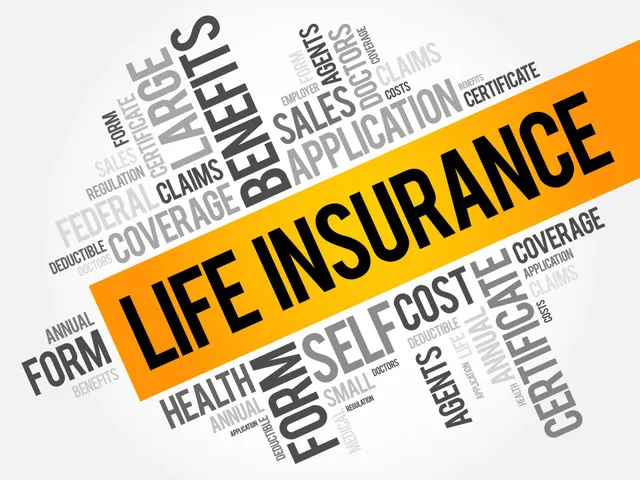Term life insurance plan is one of the most straightforward and affordable ways to ensure financial protection for your loved ones in the event of your passing. If you’re new to life insurance or considering whether it’s right for you, understanding the basics can help you make an informed decision. In this blog, we’ll break down term life insurance in simple terms, explore its benefits, and provide practical tips for choosing the right policy for your needs.
What is Term Life Insurance plan?
Term life insurance plan provides coverage for a specific period, or “term,” typically ranging from 10 to 30 years. If you pass away during this term, your beneficiaries receive a death benefit—usually a lump sum of money that can help cover living expenses, debts, and other financial needs.
Unlike whole life insurance, which offers coverage for your entire life and includes a savings component, term life insurance focuses solely on providing a death benefit. This makes it a more affordable option for many people.
Why Choose Term Life Insurance Plan?
- Affordability: Term life insurance is generally less expensive than whole life insurance. Because it only provides coverage for a specific term and doesn’t include a savings component, premiums are lower.
- Simplicity: With term life insurance, you pay premiums, and if you pass away during the term, your beneficiaries receive a death benefit. There are no complex investment options or savings plans to manage.
- Flexibility: Term life insurance policies can often be renewed or converted to a permanent policy, depending on your needs. This flexibility allows you to adjust your coverage as your life circumstances change.
How to Choose the Right Term Life Insurance Policy?
- Determine Your Coverage Needs: Start by calculating how much coverage your family would need if you were no longer there. Consider factors like outstanding debts, mortgage payments, children’s education, and daily living expenses.
- Choose the Right Term Length: The term length should align with your financial responsibilities and goals. For example, if you have young children, you might choose a longer term to ensure they’re covered until they are financially independent.
- Compare Policies: Different insurers offer varying terms, coverage amounts, and premiums. Compare multiple policies to find one that offers the best value for your needs.
- Consider Riders and Add-Ons: Some policies offer optional riders, such as accelerated death benefits or disability waivers, which can provide additional protection. Evaluate these options based on your personal needs.
- Check the Insurer’s Reputation: Choose an insurance company with a strong financial rating and good customer service. This ensures that the insurer will be able to pay out the death benefit when needed.
Common Misconceptions About Term Life Insurance Plans
- “I Don’t Need Life Insurance”: Even if you’re young and healthy, term life insurance can provide crucial financial protection for your loved ones. Unexpected events can happen, and having coverage can offer peace of mind.
- “Term Life Insurance Is a Waste of Money”: If you outlive your term policy, you might not receive a payout. However, term life insurance is designed to be affordable, and the coverage it provides during the term can be invaluable to your beneficiaries.
- “All Term Life Policies Are the Same”: Policies can vary widely in terms of coverage, premiums, and options. It’s essential to shop around and find a policy that best meets your specific needs.
Endowment Policies: A Brief Overview
While term life insurance is focused solely on providing a death benefit, endowment policies offer both life coverage and a savings component. An endowment policy combines life insurance with a savings plan, where you pay regular premiums over a specified period. At the end of the policy term, you receive a lump sum pay out that includes the sum insured plus any accumulated bonuses or interest.
Endowment policies can be appealing if you’re looking for a dual benefit—both insurance coverage and a savings or investment component. They are often used for goals such as funding a child’s education or accumulating a retirement fund. However, they tend to be more expensive than term life insurance because of the additional savings feature.
Before opting for an endowment policy, consider your financial goals and whether you need the additional investment component. Comparing endowment policies with term life insurance can help you decide which product best suits your needs and budget.
Additional Consideration
- Health and Age: Your health and age play significant roles in determining your premiums. Younger and healthier individuals typically pay lower premiums. If you have health concerns, it might be beneficial to get coverage sooner rather than later to lock in lower rates.
- Review Periodically: Your needs may change over time, so it’s a good idea to review your policy periodically. Major life events, such as marriage, having children, or buying a home, might necessitate a change in your coverage.
- Seek Professional Advice: If you’re unsure about which policy to choose or how much coverage you need, consider consulting with a financial advisor or insurance agent. They can provide personalized advice based on your unique situation.
Concluding Remarks
Term life insurance is a practical and cost-effective way to provide financial protection for your loved ones. By understanding the basics, evaluating your needs, and comparing policies, you can choose the right coverage to ensure your family is taken care of in the event of your passing. Remember, the right term life insurance plan can offer peace of mind and financial security, making it a worthwhile consideration for many individuals and families.






